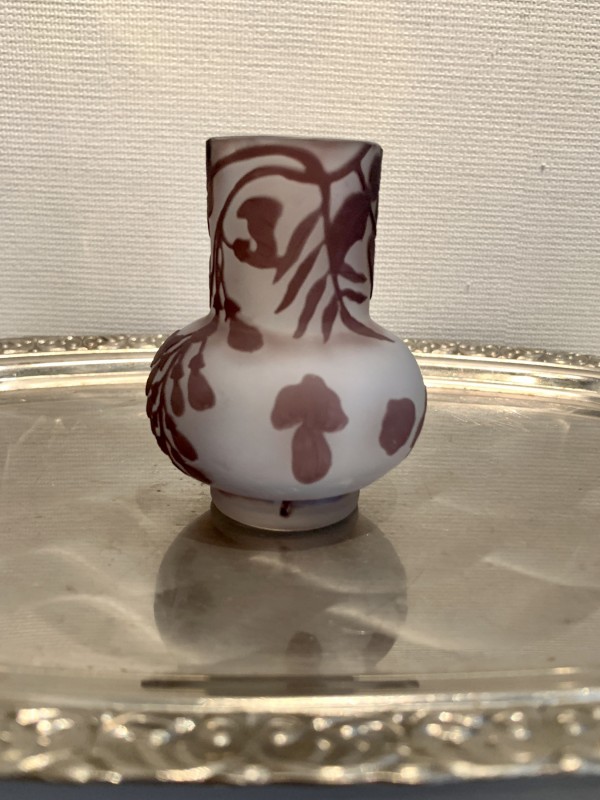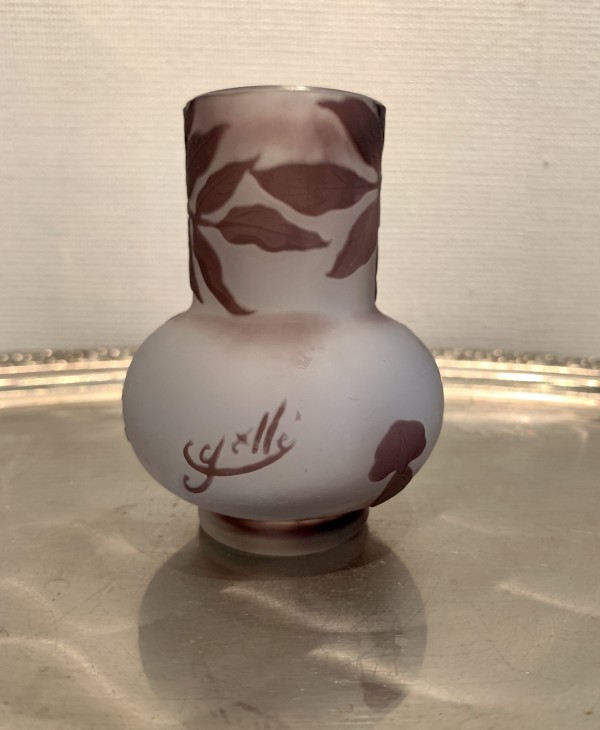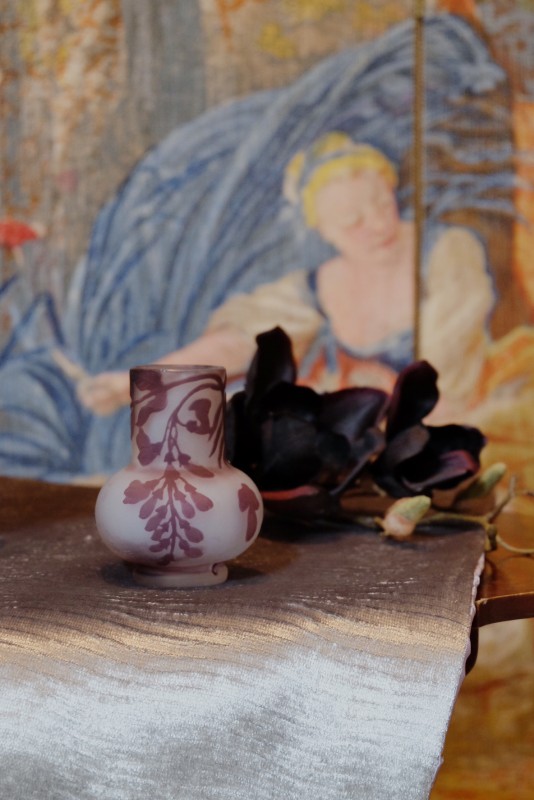Emile Galle
Emile Galle
(Pottery artist)
(Description)
Charles Martin Émile Gallé (May 4, 1846-September 23, 1904) French glassworker, pottery and furniture designer, art director, and business executive who represented the Art Nouveau movement.
Born on May 4, 1846 in Nancy, Lorraine, France, the son of a Faience pottery and furniture factory, he entered the Imperial High School of Nancy (Lycée) in 1858. In 1866-67, he worked in the glass factory of Burgun, Schwerer & Cie. in Meisenthal. (Burgun, Schwerer & Cie.) glass factory in Meisenthal (English version) in 1866-67, where he learned the art of glassmaking.
In 1870, the Franco-Prussian War broke out between Prussia and France, and Galle volunteered for the volunteer army. In 1871, the Prussians overwhelmed the French and entered Paris, and the defeated French ceded part of Lorraine, Galle's homeland, and all of Alsace under the Treaty of Frankfurt. After leaving the army, he followed his father to England, where he visited the South Kensington Museum.
In 1877, he replaced his father as factory manager.
In 1878, he exhibited his original "moonlight" glass (a light blue base colored by cobalt oxide) and pottery at the Paris Exposition Universelle and won the Bronze Medal. He also won a silver medal for his pottery for garden decoration. In 1882, he submitted 29 albums for design registration to the Labor Court in Nancy, in northeastern France. In 1882, he submitted 29 albums for design registration to the labor court in Nancy, northeastern France, which were acquired by the Kitazawa Museum of Art in an auction in the early 1980s.
In 1884, he exhibited his work at the "Stone, Wood, Clay, and Glass" exhibition organized by the Central Federation of Decorative Arts, and won the gold medal. 1885, while studying at the Nancy School of Water Conservancy and Forestry, he became acquainted with Takashima Tokuzo, a bureaucrat in the Ministry of Agriculture and Commerce who had a deep knowledge of art, and is said to have gained knowledge of Japanese cultural objects and plants. Takashima, who specialized in ink and wash paintings, painted about 400 works in Nancy. Galle is said to have received two paintings from Takashima. This interaction led to Galle's creation of a blackish-brown glass (later named "Vase of Sorrow" by the artist) with an ink-painting-like blur.
In 1886, he began manufacturing in a furniture workshop he built near his home in Nancy.
In 1889, he exhibited a large number of his works at the Paris Exposition, and also prepared his own pavilions to stage the exhibits. As a result, he won the Grand Prix in the glass category, a gold medal in the ceramics category, and a silver medal in the furniture category, gaining international recognition as a decorative artist. In particular, his series of works using blackish-brown glass substrates were well received. His most famous work is Orpheus and Eurydice.
In 1894, he bought an additional site where a furniture factory had been built, and completed a factory for glass production. In 1898, he obtained patents for the Marquetry technique and the Pachinet material. In 1900, he exhibited a large quantity of glassware and furniture at the Paris Exposition, again winning the Grand Prix and gaining even greater recognition. In 1901, he became the president of the Ecole de Nancy (fr), and in 1903, he exhibited his work at the Nancy School exhibition held at the Palais du Louvre, Marsan.
He died of leukemia on September 23, 1904, at the age of fifty-eight, and his workshop continued to be run by the painter Victor Prouvé and his wife Henriette. The majority of his products were etched cameos.
Production was temporarily halted during World War I (1914-18), and resumed in 1918 by his daughter-in-law, Paul Perdrise, but the company was dissolved in 1931. The factory site was sold.
Representative techniques and works
Marqueterie: A technique of inlaying glass parts into glass.
Marqueterie: A technique for inlaying glass parts into glass. patine: "patinaed". A technique to make the surface of glass rusty or muddy.
"Glass that speaks: A name given to glassware with a design of a verse or warning phrase on the surface.
Faience ware : Made in the family business. They used molds for mass production to make a wide range of decorative products, from miscellaneous daily utensils to works of art. These pottery projects were not made in the workshop after Galle's death.
Size: 9 cm (height) X 7 cm (width) with Galle mark
Shipping: The total amount including the shipping fee will be noticed to the customer via email. Please contact via contact form or telephone to order this artwork.






